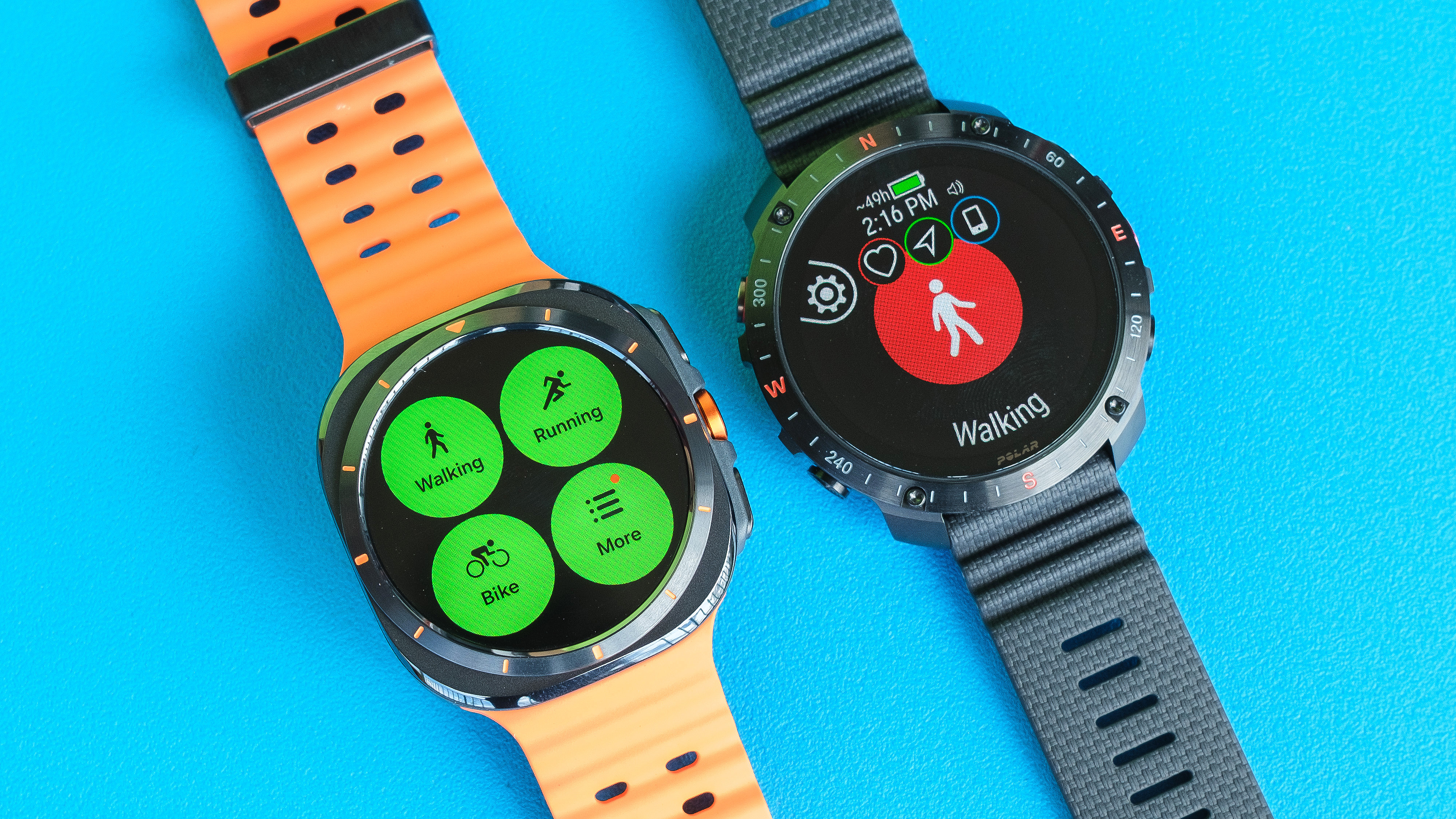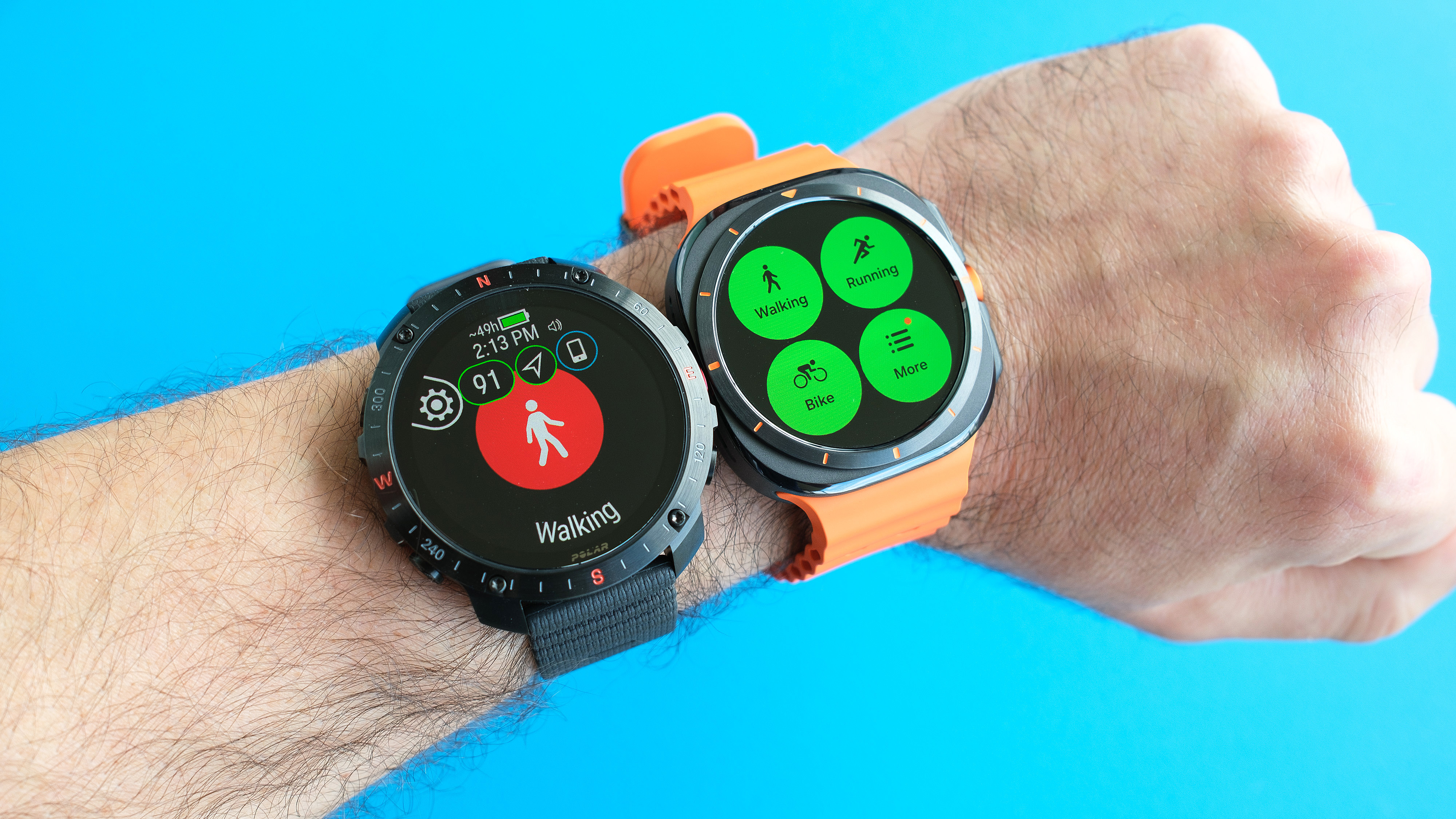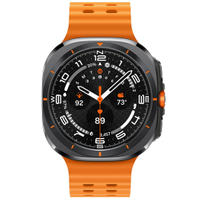I walked 5,600 steps with the Polar Grit X2 Pro vs. Samsung Galaxy Watch Ultra— this one won
A head-to-head showdown between two flagship rugged smartwatches

The Samsung Galaxy Watch Ultra and Polar Grit X2 Pro are two of the toughest-built smartwatches to debut in 2024; the former is one of the best smartwatches overall. They're also among the priciest new models on the market boasting long-lasting batteries and ample features for hardcore athletes and adventures alike. But which one is more accurate?
Each is capable of tracking complex multisport workouts, including triathlons as well as high-adrenaline activities like alpine skiing and mountain biking. However, you can also use them to keep tabs on less extreme endeavors, including walks and hikes, which is exactly what I did.
To find out which is the more precise tracker, I wore the Samsung Galaxy Watch Ultra and Polar Grit X2 Pro on either wrist while embarking on a muggy yet serene urban hike around Seattle, Washington. As always, I carefully manually counted each and every step and compared my results at the end to those recorded by the watches.
Which rugged wearable did the best? Read on.
Samsung Galaxy Watch Ultra vs. Polar Grit X2 Pro: Price and features

The Polar Grit X2 Pro starts at a cool $749 and jumps to $869 for the lighter, titanium Titan edition. The Samsung Galaxy Ultra costs $649.
Both sport fairly large, chunky cases. The Ultra is 47mm while the Grit X2 Pro is closer to 49mm. Screen real estate is also similar, though the Samsung display gets much brighter (3,000 nits) than the Polar (1,050 nits), making it easier to view in direct sunlight.
While the Polar Grit X2 Pro is designed as a dedicated workout/adventure wearable, the Samsung Galaxy Watch Ultra is more of a full-featured smartwatch with built-in LTE connectivity — a feature absent on the Polar — and access to a huge library of apps.
Sign up to get the BEST of Tom's Guide direct to your inbox.
Get instant access to breaking news, the hottest reviews, great deals and helpful tips.
Still, either device is a solid option if you want in-depth training tools, advanced workout metrics, sleep and recovery data, precise dual-band GPS and access to offline maps.
You can also swim with either device, thanks to 100 meters of water resistance. That said, Samsung recommends against diving, water skiing and other "high-pressure water activities" with its watch, suggesting that water resistance may not be quite as good as the Polar's.
Samsung Galaxy Watch Ultra: $649
The Samsung Galaxy Watch Ultra is sort of like the Android version of the Apple Watch Ultra 2. Tough-built, large and sporting a super-bright screen, the Ultra is also packed to the gills with wellness tracking tech. Best of all, AI-powered holistic insights and tips are great motivational tools for living your best life.
Samsung Galaxy Watch Ultra vs. Polar Grit X2 Pro: Walk test
For this walk test, I wore the Samsung Galaxy Watch Ultra on my left wrist and the Polar Grit X2 Pro on my right. Using an old-timey handheld manual tally counter, I clicked once every 100 steps, before starting my manual count again at one.
With ominous skies keeping most folks indoors, I set out into the cool, humid early evening eager to get my steps in and enjoy some fresh air. Weaving my way through a mix of public parks, tree-lined neighborhoods and multi-story urban areas, I ultimately clocked exactly 5,600 steps before heading home.
Here's how data from the Galaxy Watch Ultra and Grit X2 Pro compare.
Samsung Galaxy Watch Ultra vs. Polar Grit X2 Pro: Walk test results
| Header Cell - Column 0 | Galaxy Watch Ultra | Polar Grit X2 Pro | Control |
|---|---|---|---|
| Steps | 5,532 steps | 5,524 steps | 5,600 steps (manual count) |
| Distance | 2.92 miles | 2.97 miles | 3.02 miles (Google) |
| Elevation gain | 280 ft | 260 ft | n/a |
| Avg. pace | 18 mins 19 secs per mile | 18 mins, 29 secs per mile | n/a |
| Cadence | 103 steps per min | 53 steps per min | n/a |
| Avg. heart rate | 121 bpm | 119 bpm | n/a |
| Max heart rate | 146 bpm | 145 bpm | n/a |
| Calories burned | 337 calories | 526 calories | n/a |
Both devices were within 100 steps of my total which I'd classify as very accurate. However, the Samsung watch was closer than the Polar to my actual count by a super-slim margin of eight steps.
Distance info is essentially a wash between the two and also lines up nicely with the Google Maps data, generated by using the Measure Distance tool to carefully retrace my exact route utilizing those generated by the two devices post-workout as a guide.
This is also the first time I've seen such similar pace data from two wearables while doing one of these challenges. Heart rate data is also a near-match, but what's the deal with the cadence metrics? It appears that Polar is registering a "step" as a left-foot-right-foot affair, while Samsung counts each foot movement individually.
Finally, every smartwatch calculates calories burned differently, so, there's no real surprise here that the data doesn't match up. Of all the metrics these devices capture, this is the one I tend to ignore the most because it seems the least reliable.
Galaxy Watch Ultra vs. Polar Grit X2 Pro: Samsung wins

The Samsung Galaxy Watch Ultra wins this step-count challenge by the smallest of margins, but, as always, this doesn't outright make it a better wearable than the Polar Grit X2 Pro for tracking your own fitness adventures. Either is a great option when it comes to tracking precision.
Moreover, both of these swanky, rugged flagship smartwatches are built for taking on the great outdoors and would make a great companion for your next trip to the mountains, while also helping you rest and recover from your excursion once safely back home.
Can't decide between the two? Ask yourself this: how much do I want to spend and do I want a dedicated adventure watch or a more well-rounded smartwatch?
More from Tom's Guide

Dan Bracaglia is the Tom’s Guide editorial lead for all things smartwatches, fitness trackers and outdoor gear. With 15 years of experience as a consumer technology journalist testing everything from Oura Rings to instant cameras, Dan is deeply passionate about helping readers save money and make informed purchasing decisions. In the past year alone, Dan has assessed major product releases from the likes of Apple, Garmin, Google, Samsung, Polar and many others.
An avid outdoor adventurer, Dan is based in the U.S. Pacific Northwest where he takes advantage of the beautiful surroundings every chance he gets. A lover of kayaking, hiking, swimming, biking, snowboarding and exploring, he also makes every effort to combine his day job with his passions. When not assessing the sleep tracking and heart rate accuracy of the latest tach gadgets, you can find him photographing Seattle’s vibrant underground music community.


